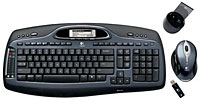 It could be argued that a keyboard’s beauty lies in its simple elegance. No flashing lights, no blinking screens, no whirring eye candy, just several rows of dumb keys obediently awaiting your input.
It could be argued that a keyboard’s beauty lies in its simple elegance. No flashing lights, no blinking screens, no whirring eye candy, just several rows of dumb keys obediently awaiting your input.
Simple. Classic.
Boring.
Clear your desks for Logitech’s new Cordless Desktop MX 5000 Laser keyboard – a futuristic, gadget-tastic affair that will makes your current keyboard look more at home in a Stone Age cave.
The Bluetooth keyboard features a built-in LCD which can display a ton of useful (and not-so-useful) information including e-mail and instant message notifications, favourite playlists and Internet radio stations.
Ever found yourself typing an email to your Gran and wondering what the ambient temperature of the room was? No problem – the MX 5000’s got a built in room temperature readout.
For MP3 junkies, there’s one-touch access to music playlists from popular player like iTunes, Windows Media Player and Musicmatch, with keyboard bashers also able to access and launch categories and themes of music through Musicmatch’s Internet radio stations.
The keyboard LCD screen provides instant notification of new e-mail and instant messages and there’s also a humble calculator included, but this one’s got a clever twist, with calculation results automatically being saved to the computer’s clipboard. Neat.
Naturally, if you want indicators, the MX 5000’s got ’em, with the LCD screen keeping users informed about the vital status of the caps lock and F lock keys, volume levels and mute.
 The MX5000 reflects the trend which sees dumb-as-a-rock keyboards slowly turning into smartypants devices, capable of both sending and receiving info from the computer and, in this case, even acting as a Bluetooth 2.0 Enhanced Data Rate (EDR) wireless hub.
The MX5000 reflects the trend which sees dumb-as-a-rock keyboards slowly turning into smartypants devices, capable of both sending and receiving info from the computer and, in this case, even acting as a Bluetooth 2.0 Enhanced Data Rate (EDR) wireless hub.
“Logitech introduced the world’s first mouse-and-keyboard combination in 1998 with the goal of removing cord clutter from the desk,” gushed Denis Pavillard, Logitech vice president of product marketing for desktops.
“We succeeded in delivering on that vision, and we are now addressing a different kind of clutter – cleaning up the mess of notifications and information that are displayed on the computer monitor.”
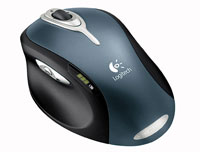 “The Logitech Cordless Desktop MX 5000 Laser desktop pushes that information to a peripheral screen so that people can choose when to glance at their notifications and status information, and can therefore clear their monitors — and their minds,” he added.
“The Logitech Cordless Desktop MX 5000 Laser desktop pushes that information to a peripheral screen so that people can choose when to glance at their notifications and status information, and can therefore clear their monitors — and their minds,” he added.
The Cordless Desktop MX 5000 package comes with Logitech’s MX1000 Cordless Laser Mouse, a laser powered chappie in a matching blue-slate/black finish.
Of course, the more functionality you squeeze into a keyboard, the greater the power needs, and Logitech have included a smart power-management solution which seems to comprise of a decidedly low tech on/off switch on the keyboard and an integrated battery indicator light.
We could have used one of them for our Logitech MX700 mouse which promptly ran out of juice half way through writing this review and is now pointlessly blinking away in its recharging dock.
The Logitech Cordless Desktop MX 5000 Laser will be available in October in the U.S. and Europe with a suggested retail price of £119.99 (€176) in Europe ($149.99 US).
 The UK market for online shopping looks set to soar to £60 billion (~€88 billion, US$108 billion~) by 2010 according to a new report.
The UK market for online shopping looks set to soar to £60 billion (~€88 billion, US$108 billion~) by 2010 according to a new report. The Future Foundation commented that websites sporting yoof-orientated design, teensy weensy text and kray-zee interfaces are likely to miss out on silver surfer sales.
The Future Foundation commented that websites sporting yoof-orientated design, teensy weensy text and kray-zee interfaces are likely to miss out on silver surfer sales.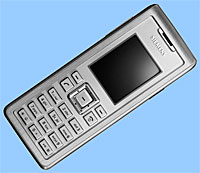 Following hot on the heels of Vodafone’s successful stripped-down phone
Following hot on the heels of Vodafone’s successful stripped-down phone 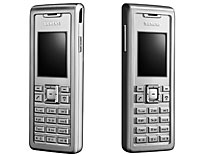 Simple doesn’t have to mean crap though, and the thin and light phone offers a 65k colour display, SMS and MMS with an innovative button on the side of the phone allowing a MMS voice message to be recorded easily.
Simple doesn’t have to mean crap though, and the thin and light phone offers a 65k colour display, SMS and MMS with an innovative button on the side of the phone allowing a MMS voice message to be recorded easily.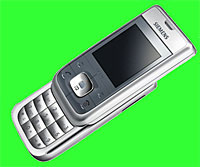 Siemens have also announced their new CF110 slim slider phone.
Siemens have also announced their new CF110 slim slider phone. The CF110 is also something of a frill-free affair, with no camera, Bluetooth or music playback functionality onboard.
The CF110 is also something of a frill-free affair, with no camera, Bluetooth or music playback functionality onboard.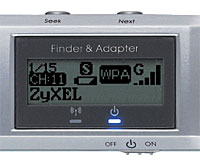 ZyXEL’s new AG-225H Wi-Fi Finder is an ideal tool for hotspot-hunting consumers, hackers, freeloaders and bandwidth bandits.
ZyXEL’s new AG-225H Wi-Fi Finder is an ideal tool for hotspot-hunting consumers, hackers, freeloaders and bandwidth bandits. The AG-225H claims to be the first gizmo to combine an 802.11a and 802.11b/g USB 2.0 adapter with a fully functional stand-alone hotspot detector, allowing users to turn their laptops into an access point and share their wireless access with others.
The AG-225H claims to be the first gizmo to combine an 802.11a and 802.11b/g USB 2.0 adapter with a fully functional stand-alone hotspot detector, allowing users to turn their laptops into an access point and share their wireless access with others. One of the real benefits of carrying around one of these puppies is that you don’t have to wander about with a booted-up laptop to see if there’s any Wi-Fi in the air, so the US$99 AG-225 could prove invaluable for security professionals looking for any unsecured access points.
One of the real benefits of carrying around one of these puppies is that you don’t have to wander about with a booted-up laptop to see if there’s any Wi-Fi in the air, so the US$99 AG-225 could prove invaluable for security professionals looking for any unsecured access points. There were red faces at HP (or perhaps a wild cackle from a Machiavellian PR guru) after a video presentation on their website leaked details of their next smart-phone release, the iPaq hw6700 series.
There were red faces at HP (or perhaps a wild cackle from a Machiavellian PR guru) after a video presentation on their website leaked details of their next smart-phone release, the iPaq hw6700 series. Both iPaqs come with a 3 inch, QVGA 240 x 320 pixel screen, with the handhelds measuring 7.1 x 2.1 x 11.8cm and weighing 165g. Power comes in the shape of a removable 1200mAh Lithium Ion battery
Both iPaqs come with a 3 inch, QVGA 240 x 320 pixel screen, with the handhelds measuring 7.1 x 2.1 x 11.8cm and weighing 165g. Power comes in the shape of a removable 1200mAh Lithium Ion battery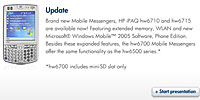 Of course, it’s always wise to be wary when information is leaked in this manner, and there is something that doesn’t quite sit right in the presentation.
Of course, it’s always wise to be wary when information is leaked in this manner, and there is something that doesn’t quite sit right in the presentation. HTC are rumoured to have won the contract to manufacture the much-hyped Windows Mobile-based version of Palm’s Treo smart phone.
HTC are rumoured to have won the contract to manufacture the much-hyped Windows Mobile-based version of Palm’s Treo smart phone.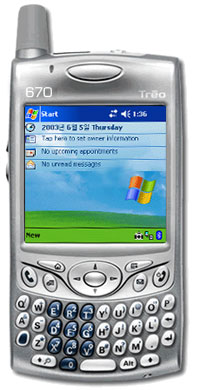 The Taiwan-based High Tech Computer (HTC) firm already manufactures its own popular suite of Windows Mobile-based smart phones and PDA-style communicators, which go under a mass of different names worldwide, depending on the mobile networks operators and handset vendors.
The Taiwan-based High Tech Computer (HTC) firm already manufactures its own popular suite of Windows Mobile-based smart phones and PDA-style communicators, which go under a mass of different names worldwide, depending on the mobile networks operators and handset vendors.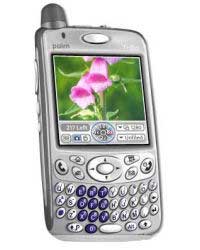 Just as we went to press, another rumour flashed across the Web, with Cool Tech Times showing a fairly convincing photograph of what it reckons is the new Treo 700.
Just as we went to press, another rumour flashed across the Web, with Cool Tech Times showing a fairly convincing photograph of what it reckons is the new Treo 700. Viacom have announced that they will be launching a special super-spoddy edition Star Trek Communicator Phone, in association with Sona Mobile.
Viacom have announced that they will be launching a special super-spoddy edition Star Trek Communicator Phone, in association with Sona Mobile.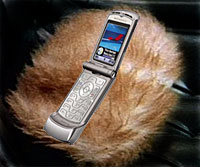 We couldn’t find a picture of the actual phone anywhere, although one poster on a Star Trek site claimed it was a re-branded Motorola V3 phone, while another frothed enthusiastically about a “multiplayer, persistent game universe, that uses location based / GPS information to alert you when an ‘enemy player’ is within range so you can do battle!”
We couldn’t find a picture of the actual phone anywhere, although one poster on a Star Trek site claimed it was a re-branded Motorola V3 phone, while another frothed enthusiastically about a “multiplayer, persistent game universe, that uses location based / GPS information to alert you when an ‘enemy player’ is within range so you can do battle!” AOL is giving away hundreds of thousands of dollars of gold, cash and goods seized from a spammer as a warning to anyone thinking of “making a living sending spam to AOL members”.
AOL is giving away hundreds of thousands of dollars of gold, cash and goods seized from a spammer as a warning to anyone thinking of “making a living sending spam to AOL members”. The company said it managed to close down the dastardly spammer’s 40-computer enterprise thanks to help from its members, who enthusiastically clicked a “report spam button” to register their complaints.
The company said it managed to close down the dastardly spammer’s 40-computer enterprise thanks to help from its members, who enthusiastically clicked a “report spam button” to register their complaints. Thanks to its aggressive mo’fo’ antispam filters, AOL has claimed that spam on their servers has fallen by more than 85 percent since its peak in late 2003.
Thanks to its aggressive mo’fo’ antispam filters, AOL has claimed that spam on their servers has fallen by more than 85 percent since its peak in late 2003.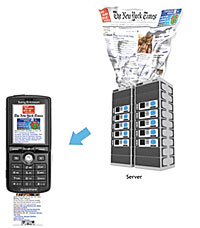 Norwegian browser brewers, Opera Software, have announced Opera Mini, a J2ME (Java 2 Mobile Edition) Web browser for “virtually all mobile phones”.
Norwegian browser brewers, Opera Software, have announced Opera Mini, a J2ME (Java 2 Mobile Edition) Web browser for “virtually all mobile phones”. The browser makes up for the feeble firepower of low end phones by using a remote server to pre-process Web pages before sending them to the phone, rather than trying to get the phone to process the pages.
The browser makes up for the feeble firepower of low end phones by using a remote server to pre-process Web pages before sending them to the phone, rather than trying to get the phone to process the pages.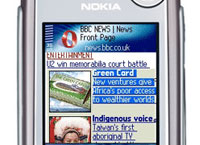 “With Opera Mini, the phone only has to run a small Java-client and the rest is taken care of by the remotely located Opera Mini server. With Opera Mini you don’t have to have an advanced phone to surf the Web, which means that most people can use it with their existing phones.”
“With Opera Mini, the phone only has to run a small Java-client and the rest is taken care of by the remotely located Opera Mini server. With Opera Mini you don’t have to have an advanced phone to surf the Web, which means that most people can use it with their existing phones.” Patriotically, Norway’s leading commercial television station, TV2, have already bundled Opera Mini with its mobile services in Norway to offer its viewers a complete mobile content package with a branded Web browser.
Patriotically, Norway’s leading commercial television station, TV2, have already bundled Opera Mini with its mobile services in Norway to offer its viewers a complete mobile content package with a branded Web browser. It used to be that artists rebelled against the system, the government, the breadheads and The Man, but artists signed to Sony in Japan are fighting their label’s decision not to make their songs available through the iTunes Music Store.
It used to be that artists rebelled against the system, the government, the breadheads and The Man, but artists signed to Sony in Japan are fighting their label’s decision not to make their songs available through the iTunes Music Store. Talks between the two electronic giants Sony and Apple are believed to be continuing to resolve the problem.
Talks between the two electronic giants Sony and Apple are believed to be continuing to resolve the problem.